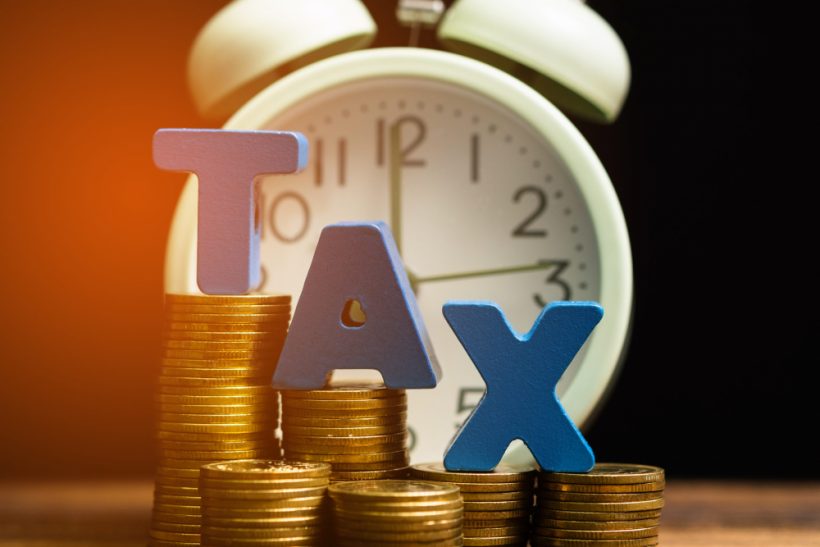Definitions of Progressive Taxes
The overall burden of paying taxes is higher on the rich than on low-income earners in the progressive tax system. This type of tax helps low-income families pay for necessities such as accommodation, food, and transportation. Continuing taxes allow them to spend most of their income on living expenses.
Ongoing tax systems improve the poor’s ability to afford necessities and, in turn, increase economic demand.
Unlike continuous taxation, lower taxes or deferred taxes may reduce the ability of low-income taxpayers to afford a decent standard of living.
Continuous taxation is when the rate of tax burden increases with income. As a result, households with higher incomes pay an unequal portion of the tax burden, while low- and middle-income taxpayers carry relatively little tax burden.
What makes the tax system better?

An ongoing tax system utilizes higher tax rates at higher income levels. For example, in the U.S., personal income tax rates range from 10 to 37 percent. This design results in higher-paid people paying more of their income than low-income people.
Governments may use various types of taxation, including continuous, reversal, downtime, or balancing. The Progressive Tax System is another area where the tax burden increases as taxable income grows. In some cases, there is a small tax-free amount where people earning less than the stated tax rate are not liable for any payments to the tax authorities.
Under continuous taxes, it is believed that the highest paid people should pay more. Therefore, income tax is divided into slabs. Since the taxpayer’s income exceeds the estimated revenue, the new tax rate (higher than before) is charged to them.
Problem Of Defining Time
Another problem involves defining the time at which progress is to be made. The plan provided may be deferred if evaluated using annual data but continued when considered for life. For example, social security taxes in the United States are taxed only to the extent that wages are adjusted for inflation, which means that over payers do not have this particular progressive tax. In hindsight, the social security system seems to be slowing down because low-income earners pay more than their income from social security taxes. However, the payment of social security taxes entitles the taxpayer the right to more progressive future benefits. Lower-paid employees get a better return on their social security benefits throughout life than higher-paid employees. Therefore, from a lifetime perspective, the U.S. public safety tax progresses, though at times it seems to recede.

How Does Progressive Tax Work?
With continuous taxation, prices are set at a certain income level; higher rates pay more.
In the U.S., corporate taxation is a continuing tax. Generally, the population of a country that makes less than $ 9,950 pay 10% of the tax, while those who do more pay higher tax rates (up to 37%).
There are different tax brackets, or collections, of taxable income, taxed at different rates.
These are the 2021 tax rates with individual taxpayers’ bridges, jointly married couples, and family heads.2 Income rates represent taxable income or surplus after all exemptions and deductions have been taken.
| Rate | Single, Taxable Income Over | Married/Joint, Taxable Income Over | Head of Household, Taxable Income Over |
|---|---|---|---|
| 10% | $0 | $0 | $0 |
| 12% | $9,950 | $19,900 | $14,200 |
| 22% | $40,525 | $81,050 | $54,200 |
| 24% | $86,375 | $172,750 | $86,350 |
| 32% | $164,925 | $329,850 | $164,900 |
| 35% | $209,425 | $418,850 | $209,400 |
| 37% | $523,600 | $628,300 | $523,600 |
The top 1 percent of all the earners in the nation has paid the state tax rate of 33.3 percent in 2015, while the lowest-paid individuals out of every five spent only 1.5 percent on average.

In addition to having a sustainable tax system, many states use high tax rates on high-income people.
Types of Continuous Taxes
U.S. taxes are continuous taxes, but so are other types of taxes.
Property/ Estate Taxes
Property taxes, for example, continue. Charges for total assets transferred to live beneficiaries by a maximum of 40% over $ 11.7 million from 2021 (up from $ 11.58 million by 2020).
Trump’s tax plan is almost double the tax rate in 2018, making it less efficient.4
Obama Care Taxes
Obamacare taxes, also known as Affordable Care Act taxes, also continue. The 3.8% Net Investment Income Tax applies only to those earning more than $ 200,000 per year, or $ 250,000 to those who are married and file together, including shares and capital gains.
Additional Medicare taxes are an extra 0.9% of Medicare hospital tax on income and self-employment over these limits.5 These progressive taxes have increased by $ 30.1 billion in 2018. Limit the top 5% of tax returns included.6

Tax Credits
The tax debt of the poor is also improving. They are deducted from the tax owed instead of the total income. Some loans are only available to those who live below a certain income level.
Credit tax earned is granted to each dependent, up to a certain level of income. It is refundable, so usually, the taxpayer receives a refund if the credit exceeds the tax owed.
Tax credit for the old age population and the specially-abled is granted to those 65 years old or older who have retired due to disability. Available only to those below the minimum wage limit.
The child tax debt is a fixed amount that means more to the poor.
Retirement savings credit is only available up to a certain amount of income.
How Has the U.S. Tax System Developed?
The U.S. has a continuous income tax system that charges people who earn more tax than people who make less. For instance, although the top 1 percent of taxpayers earn 19.7 percent of adjusted income, they pay 37.3 percent of all income tax. A lower proportion of income earners pays only 3 percent of taxes.
How Do Progressive Tax Affect Employees And Workers?

Progressive tax mean that the higher a person earns, the higher the tax rate. This serves as an insufficient incentive for further performance. If a person currently in the 12 percent tax bracket would like to work overtime or take a second job, they may face a 22 percent bracket on their extra income. In those higher tax brackets, they will need to work harder to achieve their post-tax profit goals.
Some ongoing tax systems use very high rates for high-income earners. Higher costs may also affect the decision-making process of tax debt by increasing deductions and credits or by otherwise limiting taxes.
Latest: How Much Taxes Do An Average American Pay Every Year ?










